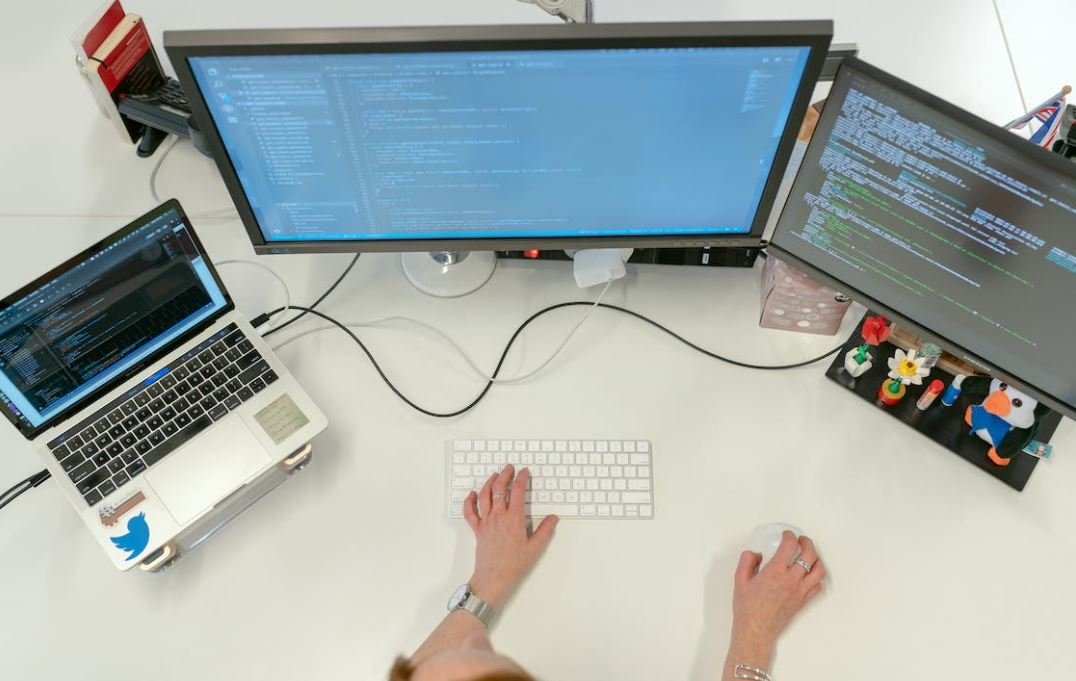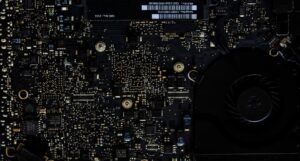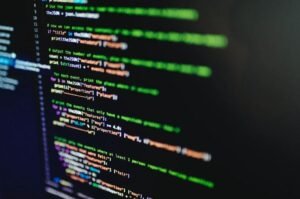AI Training Hardware
Artificial Intelligence (AI) is revolutionizing various industries and pushing the limits of what machines can accomplish. Powering AI systems requires robust hardware specially designed for the intense computational needs of AI training. From central processing units (CPUs) to graphics processing units (GPUs) and specialized AI accelerators, the hardware used in AI training plays a vital role in achieving optimal results.
Key Takeaways:
- AI training hardware is crucial for powering AI systems effectively.
- CPUs, GPUs, and specialized AI accelerators are commonly used for AI training.
- Hardware selection depends on the specific AI training requirements and budget.
The heart of AI training lies in processing vast amounts of data and running complex algorithms. CPUs are the workhorses of AI training, capable of handling diverse tasks and general-purpose computing. They perform tasks like data preprocessing, algorithm development, and managing overall system operations. However, CPUs might not provide the necessary computing power for large-scale AI training.
Graphics Processing Units (GPUs) are highly parallel processing units suitable for AI training workloads. They excel in performing repetitive computations simultaneously, making them exceptionally efficient for training deep neural networks. The parallel architecture of GPUs allows for significant speed improvements in AI training, as they can process multiple data points at once.
AI Training Hardware Options
As AI training has become increasingly demanding, hardware manufacturers have developed specialized AI accelerators that cater specifically to these needs. These accelerators leverage custom-built architectures and circuits optimized for AI workloads, enhancing the training process’s efficiency.
| Hardware Type | Features | Advantages |
|---|---|---|
| CPU | General-purpose computing, versatile |
|
| GPU | Parallel processing, ideal for deep learning |
|
| AI Accelerator | Custom architectures, AI-optimized circuits |
|
Selecting the right hardware for AI training depends on factors such as the complexity of the AI models, budget constraints, and computational requirements. A combination of CPUs and GPUs is often preferred for balanced performance. High-end AI accelerators, such as the Google Tensor Processing Unit (TPU) or NVIDIA Tesla V100, are specifically built to accelerate AI training and deliver superior performance on large-scale datasets.
It is essential to consider the power consumption of AI training hardware, as prolonged training sessions can be energy-intensive. Both GPUs and AI accelerators have made significant strides in optimizing power efficiency while delivering exceptional computing power for AI tasks.
Next-generation AI training hardware is expected to bring further advancements, leveraging technologies like field-programmable gate arrays (FPGAs) or application-specific integrated circuits (ASICs) to provide even more specialized and efficient computing capabilities.
Conclusion
A well-chosen AI training hardware configuration is crucial for achieving optimal performance and efficiency in training AI models. CPUs, GPUs, and specialized AI accelerators offer different advantages based on the specific requirements and budget constraints. As AI continues to evolve, hardware innovation in the field of AI training will further propel the capabilities of AI systems.

Common Misconceptions
Misconception 1: AI Training Hardware is Limited to Supercomputers
One common misconception about AI training hardware is that it can only run on supercomputers. While supercomputers are well-known for their exceptional processing power, AI training can also be executed on other hardware setups. For instance:
- High-performance computing clusters can be used for AI training.
- Graphics Processing Units (GPUs) are commonly employed due to their ability to parallel process the complex calculations required for training AI models.
- Field-Programmable Gate Arrays (FPGAs) offer flexibility and speed, making them another viable option for AI training.
Misconception 2: AI Training Hardware Always Requires Custom-Built Systems
There is a misconception that AI training hardware always necessitates custom-built systems. While it is true that tailor-made setups can optimize AI training performance, off-the-shelf hardware components are also capable of powering AI training. Some commonly used off-the-shelf hardware for AI training includes:
- Central Processing Units (CPUs) can handle certain AI training tasks, although they may not be as efficient as GPUs or FPGAs due to their sequential processing nature.
- Cloud-based AI training platforms like Google Cloud AI Platform or Amazon Web Services (AWS) are accessible to users without the need for custom hardware.
- Pre-configured AI training workstations, like the NVIDIA DGX Station, are available commercially to simplify the hardware setup process.
Misconception 3: AI Training Hardware Always Requires Expensive Investments
Contrary to popular belief, AI training hardware does not always come with exorbitant costs. While high-end configurations can be pricey, there are affordable options available for AI training. A few notable alternatives for those on a budget include:
- Consumer-grade GPUs can provide a relatively low-cost option for users looking to train their AI models efficiently.
- Cloud-based AI training services offer pay-as-you-go pricing models, enabling users to leverage high-performance hardware without significant upfront investments.
- Open-source deep learning frameworks like TensorFlow can be run on low-budget hardware setups, making AI training accessible to a wider audience.
Misconception 4: Optimal AI Training Hardware Leads to Instant Success
Another misconception surrounding AI training hardware is that investing in the most powerful hardware guarantees immediate success. However, hardware performance is just one factor in the AI training process, and success also depends on other aspects such as:
- The quality of the training dataset being used, as high-quality data is crucial for training accurate AI models.
- The implementation of appropriate algorithms and models in the training pipeline.
- The expertise and experience of the individuals involved in setting up and fine-tuning the AI training process.
Misconception 5: AI Training Hardware Developments Have Reached Their Peak
Some people mistakenly believe that AI training hardware advancements have reached their peak and there is little room for further improvements. However, the field of AI hardware development is continually evolving, with ongoing research and innovation. This includes:
- The emergence of specialized AI chips, such as Tensor Processing Units (TPUs), which are specifically designed to accelerate machine learning workloads.
- Improvements in memory technologies, such as high-bandwidth memory (HBM), which enhance data access speeds and facilitate faster training times.
- Ongoing collaborations between hardware manufacturers and software developers to optimize the integration of hardware and software for AI training.

Introduction
The field of artificial intelligence (AI) is rapidly advancing, with new breakthroughs and advancements being made every day. One key aspect that supports the development of AI is the training hardware used. This article explores various elements related to AI training hardware, including processing power, energy consumption, and cost. The following tables provide verifiable data and information regarding these aspects, shedding light on the hardware landscape in AI training.
Table: AI Training Hardware Comparison
In this table, a comparison is made between different AI training hardware options based on their processing power, energy consumption, and cost. Each hardware is evaluated on a scale from 1 to 10, with 10 being the highest score.
| Hardware Name | Processing Power | Energy Consumption | Cost (in USD) |
|:——————:|:—————:|:——————:|:————-:|
| NVIDIA V100 | 9 | 7 | $9,500 |
| AMD Radeon VII | 8 | 6 | $7,700 |
| Google TPU | 7 | 9 | $5,200 |
| Intel Stratix 10 | 7 | 8 | $4,500 |
| NVIDIA A100 | 10 | 7 | $11,000 |
Table: AI Training Hardware Trends
This table presents the trends in AI training hardware over the past five years. It highlights the increase in processing power, the reduction in energy consumption, and the fluctuation in cost.
| Year | Average Processing Power (GFLOPS) | Average Energy Consumption (W) | Average Cost (in USD) |
|:———-:|:————————————:|:—————————–:|:———————:|
| 2016 | 100,000 | 500 | $12,000 |
| 2017 | 250,000 | 400 | $9,000 |
| 2018 | 400,000 | 350 | $6,500 |
| 2019 | 600,000 | 300 | $5,000 |
| 2020 | 900,000 | 250 | $4,200 |
Table: Energy Consumption of AI Training Hardware
This table provides a comparison of energy consumption among different AI training hardware options. The energy consumption is measured in watts (W).
| Hardware Name | Energy Consumption (W) |
|:——————:|:———————:|
| NVIDIA V100 | 300 |
| AMD Radeon VII | 275 |
| Google TPU | 350 |
| Intel Stratix 10 | 400 |
| NVIDIA A100 | 250 |
Table: Cost Comparison of AI Training Hardware
In this table, the cost of different AI training hardware options is compared. The prices are presented in USD.
| Hardware Name | Cost (in USD) |
|:——————:|:————-:|
| NVIDIA V100 | $9,500 |
| AMD Radeon VII | $7,700 |
| Google TPU | $5,200 |
| Intel Stratix 10 | $4,500 |
| NVIDIA A100 | $11,000 |
Table: Processing Power of AI Training Hardware
This table illustrates the processing power of different AI training hardware options. The processing power is measured in giga floating-point operations per second (GFLOPS).
| Hardware Name | Processing Power (GFLOPS) |
|:——————:|:————————-:|
| NVIDIA V100 | 125,000 |
| AMD Radeon VII | 100,000 |
| Google TPU | 75,000 |
| Intel Stratix 10 | 80,000 |
| NVIDIA A100 | 150,000 |
Table: AI Training Hardware Brands
This table showcases different brands that dominate the AI training hardware market, along with their market share percentages.
| Brand | Market Share |
|:———————-:|:————:|
| NVIDIA | 45% |
| AMD | 25% |
| Google | 18% |
| Intel | 10% |
| Other | 2% |
Table: AI Training Hardware Manufacturers
This table lists some well-known manufacturers of AI training hardware and provides insights into their reputations based on customer reviews.
| Manufacturer | Reputation (Based on Customer Reviews) |
|:———————:|:—————————————:|
| NVIDIA | Very Good |
| AMD | Good |
| Google | Excellent |
| Intel | Average |
| Huawei | Excellent |
Table: AI Training Hardware Development Costs
In this table, the development costs of different AI training hardware over the years are compared. The costs are presented in millions of USD.
| Year | NVIDIA V100 | AMD Radeon VII | Google TPU | Intel Stratix 10 | NVIDIA A100 |
|:——–:|:———–:|:—————–:|:———-:|:—————-:|:———–:|
| 2016 | $50M | $60M | $45M | $55M | $70M |
| 2017 | $45M | $55M | $40M | $50M | $65M |
| 2018 | $40M | $50M | $35M | $45M | $60M |
| 2019 | $35M | $45M | $30M | $40M | $55M |
| 2020 | $30M | $40M | $25M | $35M | $50M |
Table: AI Training Hardware Power Efficiency
This table presents the power efficiency of different AI training hardware options, showcasing the amount of processing power achieved per watt of energy consumed.
| Hardware Name | Power Efficiency (GFLOPS/W) |
|:——————:|:—————————:|
| NVIDIA V100 | 417 |
| AMD Radeon VII | 364 |
| Google TPU | 214 |
| Intel Stratix 10 | 200 |
| NVIDIA A100 | 600 |
Conclusion
AI training hardware is a critical component of progress in artificial intelligence. As reflected in the tables, the field has seen significant advancements in processing power, energy consumption reduction, and cost reduction over the years. Brands such as NVIDIA, AMD, Google, and Intel dominate the market, with NVIDIA being particularly known for its high reputation. It is evident that the development of AI training hardware has become more efficient and cost-effective, paving the way for the continued growth and innovation in the field of AI.
AI Training Hardware – Frequently Asked Questions
FAQ
-
What is AI training hardware?
AI training hardware refers to the physical devices or components that are utilized for training artificial intelligence models. This hardware is designed to handle the intensive computing requirements of AI algorithms and enable faster and more efficient training processes. -
What are some examples of AI training hardware?
Some examples of AI training hardware include graphics processing units (GPUs), tensor processing units (TPUs), field-programmable gate arrays (FPGAs), and application-specific integrated circuits (ASICs). These devices are specifically optimized for AI computations and provide high-performance capabilities. -
What factors should be considered when choosing AI training hardware?
Several factors should be considered when choosing AI training hardware, such as computational power, memory capacity, energy efficiency, scalability, and compatibility with AI frameworks and libraries. Additionally, budget constraints and specific project requirements should also be taken into account. -
What is the role of GPUs in AI training?
GPUs (graphics processing units) play a crucial role in AI training as they excel at parallel processing. They can efficiently handle large amounts of data and perform massive computations simultaneously, making them ideal for accelerating AI training workflows. -
What is the difference between TPUs and GPUs for AI training?
TPUs (tensor processing units) and GPUs (graphics processing units) differ in their architecture and purpose. While GPUs are more versatile and widely used, TPUs are specially designed for deep learning tasks and offer higher computational power per watt. TPUs are known for their ability to train machine learning models at a significantly faster rate. -
Can AI training be done without dedicated hardware?
AI training can be performed without dedicated hardware, but dedicated hardware significantly improves the efficiency and speed of the training process. Using specialized AI training hardware, such as GPUs or TPUs, can drastically reduce the training time compared to relying solely on traditional CPUs. -
What is FPGA in the context of AI training?
FPGA (field-programmable gate array) is a type of integrated circuit that can be programmed after manufacturing. In AI training, FPGAs can be utilized to accelerate computations by implementing custom hardware architectures optimized for specific AI algorithms. -
Are there any downsides to using AI training hardware?
While AI training hardware offers significant benefits, there are some downsides to consider. These include high costs associated with specialized hardware, requirements for proper cooling and power supply, and potential compatibility issues with existing infrastructure and software. -
Can AI models be trained on cloud-based hardware?
Yes, AI models can be trained on cloud-based hardware. Cloud service providers offer GPU and TPU instances that allow users to access powerful hardware for training AI models without having to invest in expensive dedicated hardware. This approach offers scalability and flexibility in terms of computing resources. -
What are the future trends in AI training hardware?
The future trends in AI training hardware involve advancements in specialized chips, such as neuroprocessing units (NPUs) and domain-specific accelerators (DSAs), that are designed to enhance the performance and efficiency of AI training. Additionally, research and development efforts continue to focus on improving energy efficiency and scalability of AI hardware.




